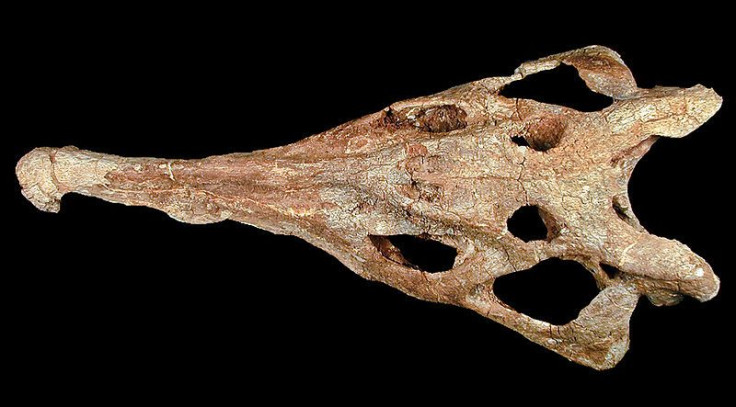205-Million-Year-Old ‘Swamp Monster’ Fossils Found In Texas, New Species Of Phytosaur Was 17 Feet Long
205-Million-Year-Old ‘Swamp Monster’ Fossils Found In Texas

If giant flesh-eating reptiles give you nightmares, be grateful this prehistoric beast is extinct. Paleontologists working in Texas have unearthed two ancient fossils belonging to two separate “swamp monsters” that roamed the area millions of years ago and would have measured 17 feet in length.
According to a new study, published in the journal Earth and Environmental Science Transactions of the Royal Society of Edinburgh, researchers concluded that the creature was a completely new species of phytosaur, an extinct group of large Triassic reptiles that roamed Earth more than 200 million years ago. The new species of phytosaur would have looked similar to modern-day crocodiles. Its habitat would have been the lush jungles that once thrived in North America in what is now the southern U.S.
According to National Geographic, researchers found the two skulls in 2001 on a Texas Panhandle ranch. The first skull they dug up wasn’t in very good condition, but the second, which had a 2-foot-long snout, shocked scientists.
"We were all kind of in awe of it," Doug Cunningham, a field research assistant at the Museum of Texas Tech University and co-author of the study, said in a statement. "It had this long, skinny snout. It was quite a bit different" from previously discovered phytosaurs skulls."
After 12 years of analysis, study and debate, scientists decided the skulls did, in fact, belong to a new species of phytosaur. They named the creature Machaeroprosopus lottorum after the family who owned the ranch.
“A phytosaur resembles a crocodile,” study co-author Bill Mueller, assistant curator of paleontology at the museum, said in a statement. “They had basically the same lifestyle as the modern crocodile by living in and around the water, eating fish, and whatever animals came to the margins of the rivers and lakes. But one of the big differences is the external nares, the nose, is back up next to its eyes instead of at the end of its snout.”
While M. lottorum would certainly have been a terrifying creature to come across, it wasn’t the biggest crocodile-like animal in Earth’s history. In 2012, researchers uncovered the fossilized remains of a 27-foot-long predator, Crocodylus thorbjarnarsoni, that dwelled in the deep lakes of Kenya some 2 to 4 million years ago.
© Copyright IBTimes 2024. All rights reserved.












